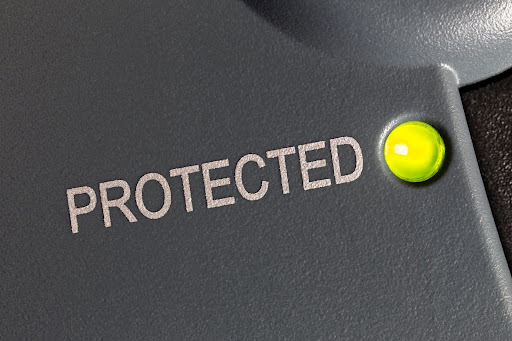
EV Chargers
Keeping up with household expenses is part of daily life for most homeowners. Between groceries, home maintenance, and the regular utility bills, costs always seem to be on your mind. So, if you’ve added an electric vehicle to the mix or are thinking about it, one of the first things you’ll likely ask is: How much does an electric vehicle charger raise your electric bill?
(more…)

Surge Protectors
When lightning strikes or sudden voltage spikes threaten your home or business, surge protectors are your first line of defense. But not all surge protectors are created equal. If you’ve been researching how to protect your electronics, electrical systems, or even your main appliances, you’ve likely come across the terms “Type 1” and “Type 2” surge protectors. So, what’s the difference?
Let’s break it all down in a simple, friendly way so you know exactly what your home or facility needs to stay safe and compliant with the National Electrical Code.
What Does a Surge Protector Actually Do?
Before we dive into the different types, let’s talk about what a surge protector is designed to handle. A surge protector, also called a surge protective device (SPD), shields your electrical system from sudden bursts of high voltage. These overvoltage events can fry your wiring, trip your circuit breakers, or destroy your expensive electronics.
Voltage surges can come from a variety of sources, including utility grid switching and lightning strikes near your property. Without proper protection, energy from those surges travels through your electrical wiring, damaging everything from your data systems to your HVAC units.
What Is a Type 1 Surge Protector?
A Type 1 surge protector is built to handle direct lightning strikes or other large surges that originate outside your building. It gets installed between your utility pole and your home or business’s main distribution board. Think of it like a lightning rod for your electrical system. It intercepts high-energy surges before they can reach your internal wiring.
Type 1 protectors are typically installed by a licensed electrician near your electric meter or main service panel. Because they’re designed to stop extremely high voltages, they play a crucial role in preventing damage during events like a lightning strike or a power company transformer switching.
Key features of Type 1 surge protectors include:
- Installation on the line side (before the main circuit breaker)
- Protection against high-voltage events like lightning or utility overvoltage
- Compliance with UL standards and the National Electrical Code
- Whole-building protection for homes and commercial properties
- Operation even if the main breaker is off
What Is a Type 2 Surge Protector?
Type 2 surge protectors work inside your building. They are installed after the main breaker, on the load side, and are meant to catch surges that happen internally. That includes power fluctuations from appliances cycling on and off, short circuits, or wiring issues.
These protectors are usually installed directly into your electrical panel. They act as a second layer of defense by reducing any remaining surge energy that made it past the Type 1 device. They’re especially helpful in protecting sensitive electronics like computers, smart TVs, and entertainment systems.
Key features of Type 2 surge protectors include:
- Installation on the load side (after the main breaker)
- Protection from internal surges caused by equipment or overcurrent
- Ideal for electronics, appliances, and smart technology
- UL listed and electrical code compliant
- Suitable for both residential and commercial spaces
Which Surge Protector Should You Choose?
Here’s the simple answer: for the best protection, you should consider using both. Type 1 and Type 2 surge protectors work together to form a layered defense system. That means you’ll be covered against both outside threats, like a lightning strike, and internal risks, like equipment malfunctions or short circuits.
This dual-protection setup is especially important for homes and facilities filled with modern technology, where even a small surge can result in major damage. Whether you’re running a data center, smart home, or workshop full of tools, this setup can save you thousands in repairs and replacement costs.
If you’re unsure what your current system includes, don’t guess. It’s a smart move to have an experienced electrical contractor evaluate it for you.
Why You Should Leave It to a Professional
You’ve probably seen plug-in surge protectors online or watched a few YouTube videos on installing whole-house SPDs. But here’s the truth: real protection involves more than plugging something into a wall.
Surge protection requires working near high voltage lines, understanding waveform signals, and correctly grounding the system. If installed improperly, a surge protector can actually increase your risk by disrupting phase balance or compromising your insulators, fuses, or transformers.
Professional installation ensures your setup meets all UL standards and complies with the National Electrical Code. An experienced electrician knows how to integrate these devices into your system safely and efficiently.
Stay Protected With Staley Electric
At Staley Electric, we help Arkansas homeowners and business owners protect what matters most. If you’re preparing for storm season, upgrading your circuit breaker panel, or adding surge protection to sensitive equipment, our team is here to help.
We install Type 1 and Type 2 surge protectors that meet national safety standards and provide reliable defense against overvoltage events. Our licensed Little Rock electricians will walk you through your options, make any necessary electrical repairs, and make sure your electrical system is equipped to handle anything, from lightning strikes to internal surges.
Don’t wait for a disaster to find out you’re unprotected. Contact Staley Electric today via our online contact form, or give us a call to schedule your surge protection consultation. We’ll keep your energy flowing and your systems safe, no matter what’s in the forecast.



Recent Comments